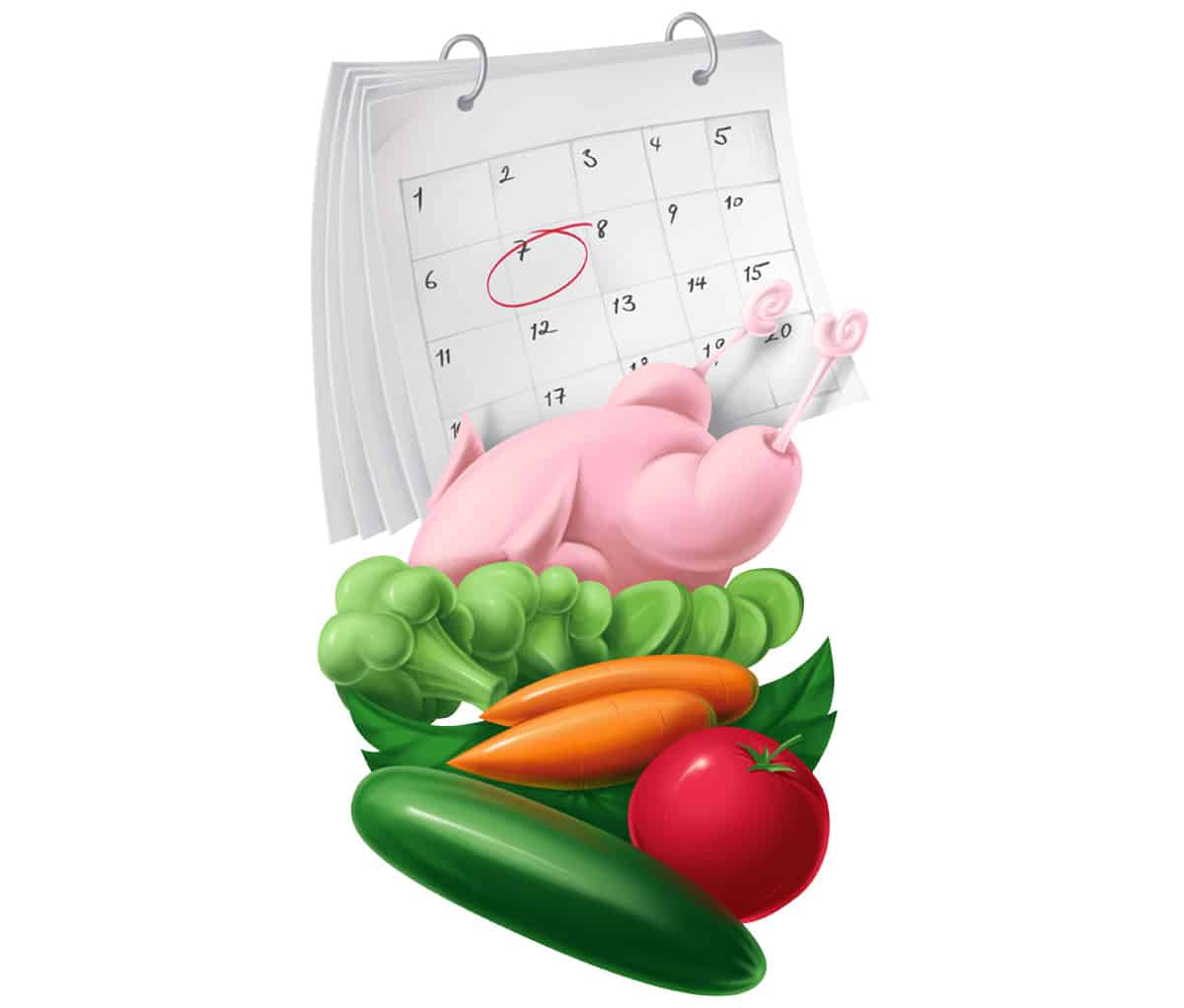
Food budgeting: it’s nobody’s idea of a fun Friday night, but it doesn’t have to be that bad! Here’s a beginner-friendly guide to making - and even better, actually following - a Paleo or keto food budget.
It’s all broken up into 7 manageable steps, and you don’t have to do them all right away. But budgeting isn’t a spectator sport - you can’t make a budget just by reading an article. To fully complete the steps, you will need:
- Receipts or card statements for at least 1 week of grocery spending
- Paper and pen OR a document on your computer OR a spreadsheet - any way you want to track this is fine.
- Optional: sales flyers from your grocery store(s)
Don’t have it all? Email this to yourself so you’ll remember to come back to it when you’ve got everything ready.
One more note: if you’ve been working with tiny grocery budgets for years and you’re already a pro - first of all, hats off to your discipline and efforts! But if that’s you, this list won’t tell you anything new. Why not share a tip or two for beginners in the comments on Facebook or Twitter?
Step 1: Figure out what you already spend.

Don’t rely on memory of what you bought or vague guesstimations (“around $100/week most of the time”). Sit down with your pile of receipts and/or your bank statement and count up your weekly and/or monthly grocery expenses. Yes, it’s a pain in the neck and takes a while, but the results can be incredibly eye-opening.
You need at least a week of Paleo grocery-shopping history to know how much you spend eating Paleo. If this is your very first week eating Paleo, save your receipts and then use those to start the process next week.
If possible, it’s helpful to divide your weekly spending into broad categories, like “essentials” and “treats.”
Step 2: Figure out how much you want to spend.
For reference, the average household in the 1930s spent around 30% of household income on food. The average household today spends closer to 10%. (These numbers don’t include eating out.) The lower your total income, the higher percentage your food budget will likely be. Here’s a table showing those percentages, not because any one of them is “right,” but just FYI:
| Your income, per year | Weekly food budget at 10% of income spent on food | Weekly food budget at 20% | Weekly food budget at 30% |
| $20,000 | $38 | $77 | $115 |
| $30,000 | $58 | $115 | $173 |
| $40,000 | $77 | $154 | $231 |
| $50,000 | $96 | $192 | $288 |
| $60,000 | $115 | $231 | $346 |
| $70,000 | $135 | $269 | $404 |
| $80,000 | $154 | $308 | $462 |
| $90,000 | $173 | $346 | $519 |
| $100,000 | $192 | $385 | $577 |
If good food is really important to you, it’s totally fine to spend more than “normal” on food - but however you choose to fit grocery expenses into your whole budget, pick your spending limit now.
Step 3: Prioritize expenses.
Most of us can’t have everything we want all the time, which means it’s time for priorities.
The simplest way to do this is to have two priority levels:
- Priority 1: Essentials - meat, eggs, fresh/frozen vegetables, healthy fats, basic seasonings.
- Priority 2: Treats - nuts, fruit, pre-cut vegetables, canned soup, Paleo-ified treats.
The specific items in each category will vary. For example, if you eat keto, then fruit wouldn’t be on the list at all, whether or not you can afford it. Any miscellaneous items that get thrown on the grocery budget (sponges, detergent, pet food, supplements, tupperware, etc.) should also get a priority level.
You can also get more complicated with multiple priority levels, but this is a quick-start guide, so we’ll stick with two for now.
Step 4: (Optional): Prorate big irregular costs
Most grocery budgets operate per week, because most people shop every week and plan meals on a weekly schedule. But it’s often cheaper in the long term to buy in bulk. For example:
- Buying spices/staples in bulk: a 5-pound bag of cinnamon is cheaper per serving than the little bottles, and will last most people several months at least.
- CSA shares (for meat and/or vegetables) can save money over buying things individually. You pay a farmer in one big lump sum at the beginning of the CSA period and then receive food on a regular schedule for several months to a year.
- Memberships to Costco, co-op stores, etc. - these have an up-front cost but can pay for themselves over time.
If you want to plan your budget on a weekly or monthly basis, the easiest thing is to divide these expenses to get a weekly or monthly cost, and count that towards your bill. For example, a weekly CSA share that costs $500 for the year would be 500/52 = $9.60 per week.
If you can’t front the cash for big outlays like this, if you prefer to track these big expenses separately, or if you just have nothing in this category, skip to step 5.
Step 5: Set weekly expenses
Here’s the good news: once you pick your total spending limit and your priorities, the actual budgeting process is pretty simple.
Your total grocery budget
- prorated expenses
= the amount you have to spend at the grocery store every week.
Starting from the top of your priority list, assign an amount that you can spend on each category. Essentials would ideally be fully-funded before treats - but quality of life is also important and we’re all just humans imperfectly doing whatever we can.
Once you’ve assigned an amount to every category, congratulations, you have a budget! Now for the hard part: sticking to it.
Step 6: Prepare for your shopping trip

This is essential for actually sticking to the budget you just spent precious time making up. Look up the weekly flyer for your store to see the sales, if that will impact your decisions at all. Then make your shopping list by priority, and note the amount you’ve budgeted for each category.
Here’s an example with made-up numbers:
Essentials (Total budget: $85)
Protein
- Grass-fed chuck roast (on sale $5.99/lb)
- Free-range chicken thighs
- Pastured pork chops
- Free-range eggs
Vegetables
- Cucumbers (on sale $0.30 ea)
- Cabbage
- Onions
- Potatoes
- Spaghetti squash (sale $0.99/lb)
(etc.)
Fat
- Coconut milk
- Butter
Treats (Total budget: $15)
- Paleo granola
- Blueberries
If you’re really having trouble sticking to your spending limits, it may help to write down the cost of each thing as you put it in your cart, and keep a running tally (round all the prices up to the next highest dollar: it makes your math easier and accounts for taxes on non-food items). You can do this on your phone so there’s no mental math, but sometimes it’s actually easier just to use a pen and paper.
Step 7: Test and Re-Evaluate
When you make your first budget, think of it as a first draft or a test run. If you get to the store and it goes out the window, it’s not a disaster: all it means is that your first draft needed some work.
If you overspent your budget, what was the reason? Was it shopping while hungry? Some emergency? Didn’t plan for all the food you would actually need? (Hint: if your first reason is “I’m weak-willed and have no self-control,” that’s fine, but that’s not something you can fix by next week. Keep listing reasons until you get one that you can proactively make a plan to fix next week.
If you stuck to your budget, what was it like? Did you have enough food? Enough options? Enough things that you actually like to eat? Were you stressed about food and money?
If you spent too much, here are some quick tips and instant fixes:
- Did you go shopping while hungry or tired? Next time, eat and have a nap.
- Were you in a rush? If so, can you either plan to have more time OR break up one mega-trip into two shorter trips so you can take your time?
- Look down your receipt and pick out the five most expensive items. Is there anything there you can cut? Anything that actually ought to be prorated over 2-3 weeks?
- What can you swap for something cheaper? E.g., can you eat chicken instead of beef for your main protein? Green peppers instead of red? Store-brand instead of name-brand?
- Is your budget just unrealistically small? If so, what can you do to find more food money somewhere else? Takeout, restaurant spending, and alcohol are all good places to look first.
...And then keep re-evaluating
Grocery budgeting is always a work in progress. Maybe your nutritional needs change, so your grocery priorities change over time. Maybe you move in with a partner, have a child, entertain guests, watch a child leave for college, or take in an aging parent. The amount of wiggle room in your budget will change with your income and other expenses.
But in the end, if you’re buying fresh groceries and cooking at home, you’re 90% of the way to health and at least 50% of the way to good food budgeting. Takeout, restaurant meals, and pre-packaged processed food are the real threats - they’re bad for your waistline and your bottom line all at once. If you can minimize those, you’re way ahead of the curve, even if you overspend on almonds or grapefruit.





Leave a Reply